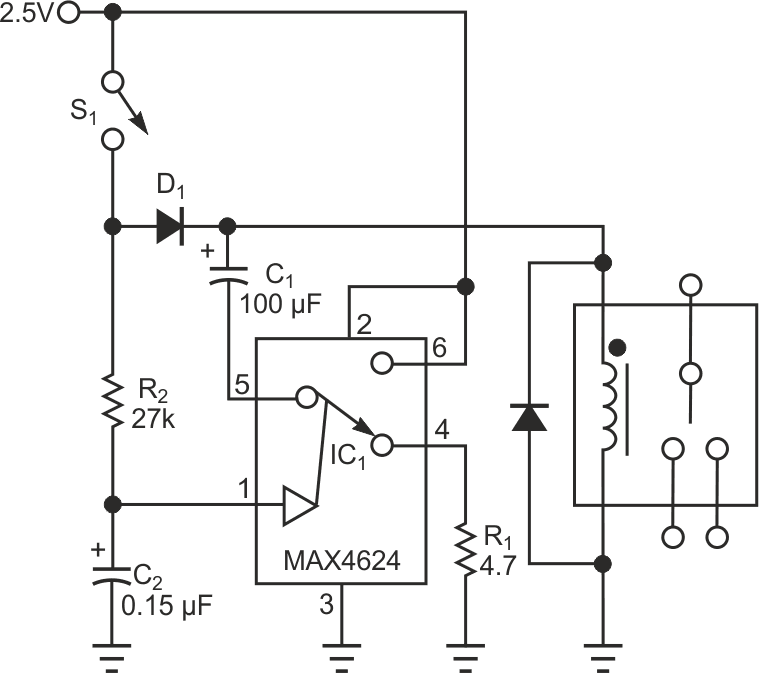Designers often use relays as electrically controlled switches. Unlike transistors, their switch contacts are electrically isolated from the control input. However, the power dissipation in a relay coil may render the device unattractive in battery-powered applications. You can lower this dissipation by adding an analog switch that allows the relay to operate at a lower voltage (Figure 1). The power that a relay consumes equals V2/RCOIL. The circuit lowers this dissipation after actuation by applying less than the normal 5 V operating voltage. Note that the voltage required to turn a relay on the pickup voltage is greater than the pickup voltage required to keep in on the dropout voltage. The elay in Figure 1 has a 3.5 V pickup voltage and a 1.5 V dropout voltage. The circuit allows the relay to operate from an intermediate supply voltage of 2.5 V. Table 1 compares the relay's power dissipation with the fixed operating voltages applied and with the circuit in Figure 1 in place.
| Table 1. | Relay power dissipation | ||||||||||||
|
|||||||||||||
 |
|
| Figure 1. | By using an analog switch, you can reduce a relay’s power consumption. |
When you close S1, current flows in the relay coil, and C1 and C2 begin to charge. The relay remains inactive because the supply voltage is lower than the pickup voltage. The RC time constants are such that C1 charges almost completely before the voltage across C2 reaches the logic threshold of the analog switch. When C2 reaches that threshold, the analog switch connects C1 in series with the 2.5 V supply and the relay coil. This action turns the relay on by boosting the voltage across its coil to 5 V, which is twice the supply voltage. As C1 discharges through the coil, the coil voltage drops back to 2.5 V minus the drop across D1, but the relay remains on because its coil voltage is above the relay's 1.5 V dropout voltage. Component values for this circuit depend on the relay characteristics and the supply voltage. The value of R1, which protects the analog switch from the initial current surge through C1, should be low enough to allow C1 to charge rapidly but high enough to prevent the surge current from exceeding the peak current specified for the analog switch.
IC1’s peak current is 400 mA, and the peak surge current is

where RON is the on-resistance of the analog switch (typically 1.2 Ω). The value of C1 depends on the relay characteristics and on the difference between VIN and the relay's pickup voltage. Relays that need more turn-on energy need larger values of C1. You select the values for R2 and C2 to allow C1 to charge almost completely before C2’s voltage reaches the threshold of the analog switch. In this example, the time constant R2C2 is approximately seven times (R1 + RON)C1. Larger R2C2 values increase the delay between switch closure and relay activation.
